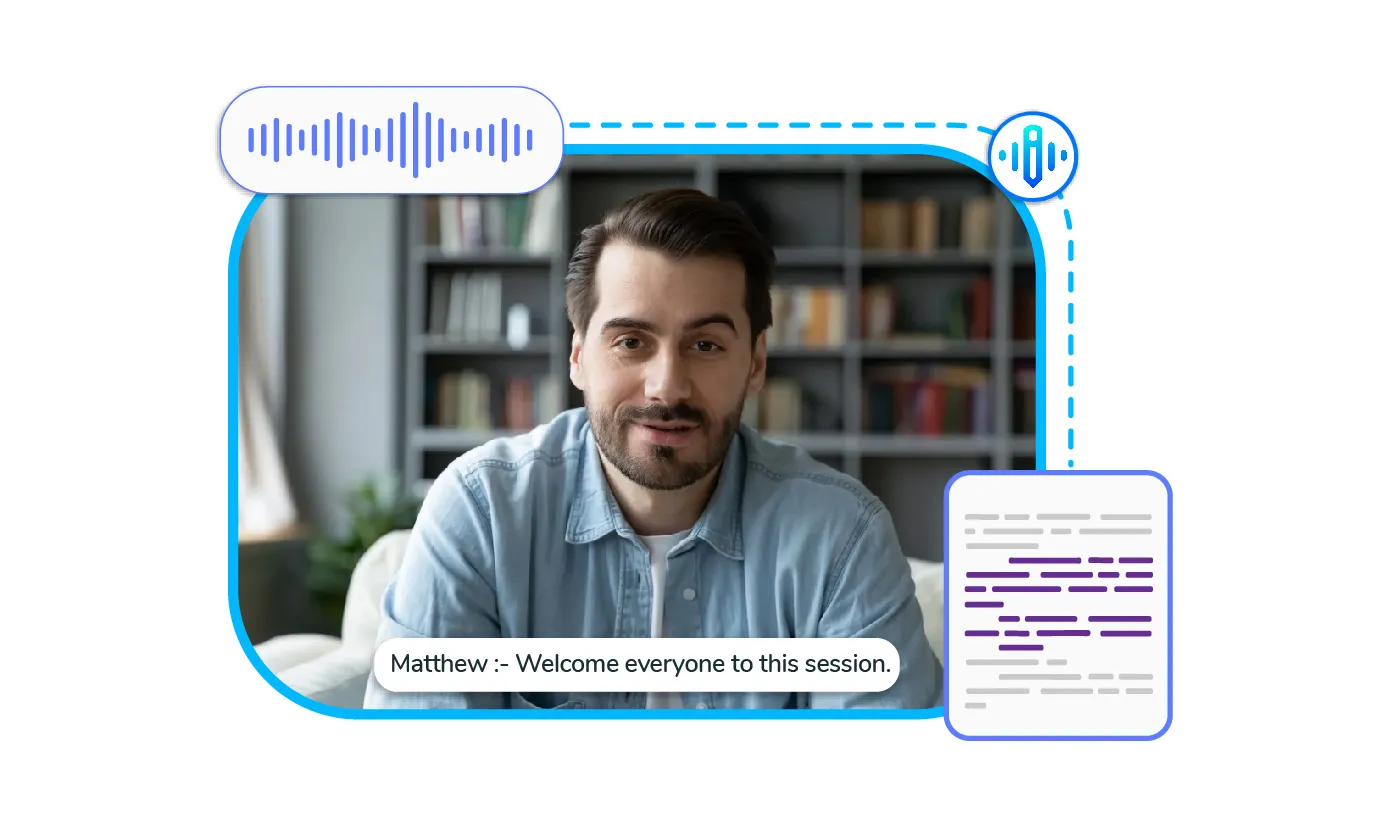Picture This: You are struggling to remember a podcast you liked. You enter some words in Google to find the episode but with no luck. After a few failed attempts, you give up and find something else to watch or do.
Now recall the time – You were keen on watching a video. But when you played the video, it was an effort to follow the dialogues because of poor sound quality and momentary distractions. You gave up in frustration after a while.
Have you ever found yourself in a tricky situation where you had to loop in another colleague who missed attending an important meeting? But you were at your wit’s end, thinking of how to process and convey the sea of information generated during the session.
Well, all these situations can easily be remedied by one magical tool – Transcription.
You could have found the podcast had there been a transcription. You could have enjoyed the video if it had captions or subtitles. You could have updated the colleague with the auto-meeting transcripts.
With businesses increasingly adopting a hybrid online approach for accelerated growth, transcription has gained more prominence. In today’s digital times, audience-favouring tools like transcription can help you gain a competitive edge.
Let’s take a look at some of the advantages of transcribing your meetings, videos, and podcasts:
- Greater Accessibility to a Wider Audience
Transcription can help reach people of different learning styles. Many people are visual learners as opposed to verbal learners, meaning they tend to retain information well when they read it than hear it. People with hearing impairment can also easily access information when a transcript is available. Captions can help people view videos regardless of language fluency, thus cutting across language barriers. Most people watch content on their mobile phones while commuting to work or boarding a flight. Having the option to read the captions allows them the freedom to watch without sound and not bother others around or view without distractions due to noisy environments.
A stellar sound quality notwithstanding, try not to miss out on potential viewers by not considering the different ways the audience may want to consume your content.
- Saves Time, Effort, and Cost
Using sophisticated AI technology, one can transcribe a podcast or meeting within minutes. Besides saving considerable time, it also removes the toil from the transcription process. One can always go for a human editor later on to get polished, error-free content. Just upload the video or audio file, get an AI-powered transcript, and edit the text. Easy, time-saving, and cost-effective!
A transcripted video or audio can further save time by enabling easy detection of relevant words allowing for more budgeted hours for insights and analysis.
- Easy Collaboration
Different researchers can easily access the transcription text of an audio or video. This can facilitate easy sharing as all research team members can pick up exact quotes. It can promote quality teamwork and effortless collaboration with precious time saved. One can create time stamps for the important talking points in a video or podcast for anyone who wishes to jump to the relevant anecdote, quote, or insight in no time.
For example – While writing a white paper, you need the correct quote to emphasize your point. You recall a particular podcast where the guest speaker gave some fabulous statistics. You may also like to use some of the other highlights of the podcast to substantiate your point. Thankfully the podcast is transcribed. You type the related phrases, and bingo! A total win.
Similarly, automated meeting transcripts can help team members quickly search for pertinent information or jump to essential parts of the meeting, making post-meeting collaborations a cakewalk. Auto transcription can make the meeting proceedings readable, searchable, and readily available without wasting hours watching lengthy videos.
- Create More Buzz
Adding transcription to your video or audio content can help optimize your searchability, online visibility, and rankings. Online search engines can easily pick up pertinent transcript text by scanning a website to relate to specific research. Without accurate transcription, a podcast will essentially be invisible to all search engines, thus losing out on higher rankings. Backed by a solid SEO strategy, you can use transcription to repurpose your content as show notes, blog posts, and social media content to create more buzz.
- Curate a Resource List or Library of your Content
It can be frustrating to realize that a searchable podcast is not available. Thus, adding transcription to your podcasts to highlight them becomes all the more important. Once transcribed, a podcast or a meeting can become a valuable asset to be used anytime. In this manner, you can create your content library for quick accessibility. When the need arises, search your library, export the relevant clip, and upload it on Twitter, Instagram, or Facebook.
Conclusion
At Wavel, we understand the importance and necessity of accurate transcription for the success of projects and businesses. That’s why we offer high-quality, accurate transcriptions powered by state-of-the-art AI technology for higher rankings and to promote a wider global reach.

.webp)










